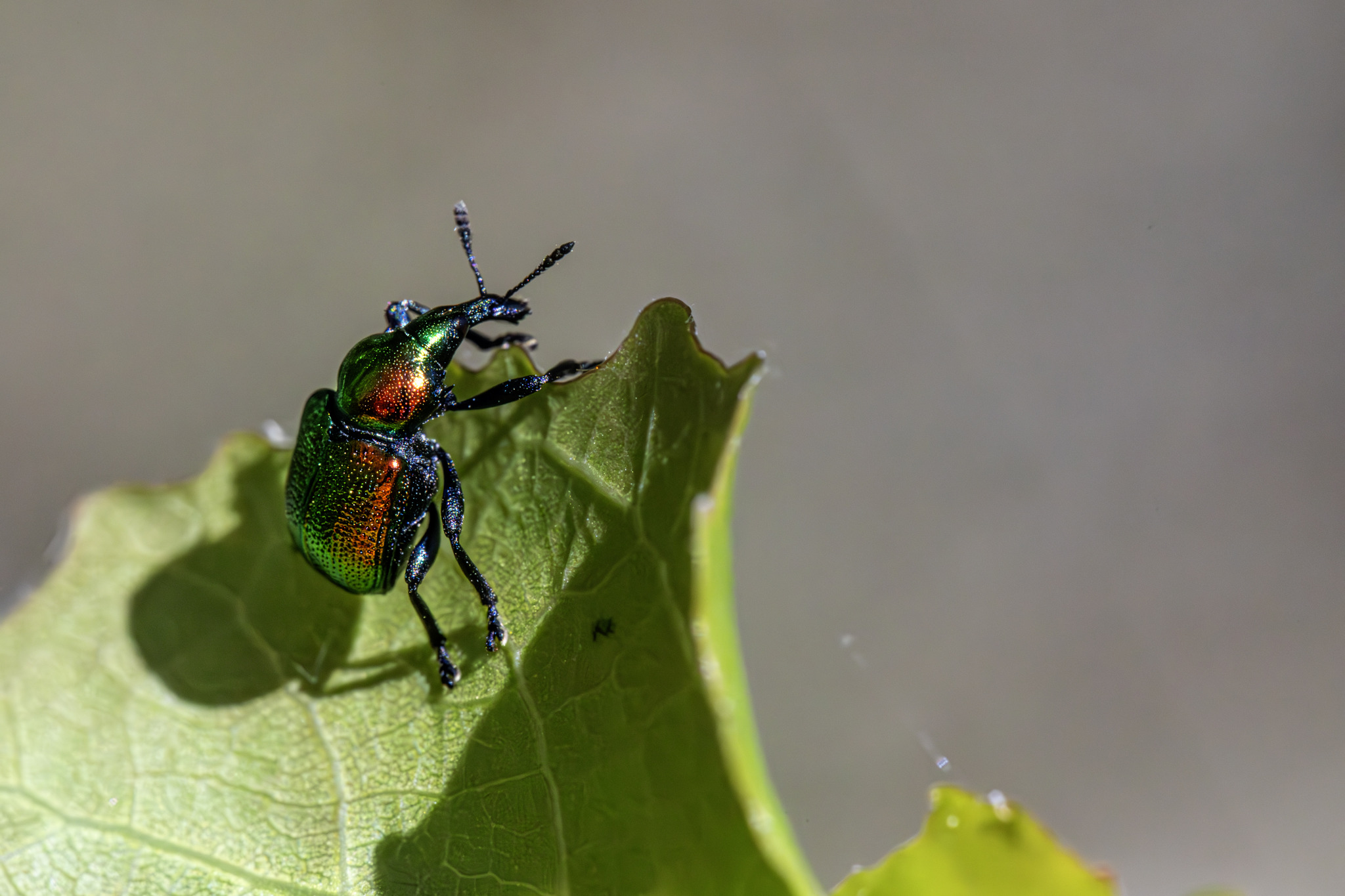The Aspen Leaf-rolling Weevil, scientifically known as Byctiscus populi, is a species of beetle in the family Attelabidae. This weevil is known for its distinctive behavior of rolling leaves into tubes. Here are some key features and characteristics of the Aspen Leaf-rolling Weevil:
- Appearance:
- Size: The weevil is relatively small, typically measuring about 5 to 7 millimeters in length.
- Color: It has a metallic sheen, with colors ranging from green to blue or copper. This iridescent coloring makes it quite striking and easy to identify.
- Shape: Like other weevils, it has a pronounced rostrum (snout), which it uses to bore into plant tissues.
- Habitat:
- The Aspen Leaf-rolling Weevil is commonly found in habitats where aspen (Populus) and related species grow. These include forests, woodlands, and areas where these trees are cultivated.
- Distribution:
- This species is primarily found across Europe and parts of Asia. It thrives in temperate regions where host plants are available.
- Diet and Feeding Habits:
- Adults: Adult weevils feed on the leaves of aspen and other related tree species. They create holes in the leaves, which can sometimes be seen as small, rounded punctures.
- Larvae: The larvae develop inside the rolled leaves, feeding on the leaf material protected within the roll.
- Behavior:
- Leaf Rolling: Female weevils are known for their unique behavior of rolling leaves into tubes. They cut and fold the leaf edges, creating a cylindrical structure where they lay their eggs. This leaf roll provides protection for the developing larvae.
- Reproduction: After the female lays her eggs inside the rolled leaf, the larvae hatch and feed on the enclosed leaf material. This protected environment helps shield them from predators and environmental conditions.
- Lifecycle:
- The Aspen Leaf-rolling Weevil undergoes complete metamorphosis, including egg, larval, pupal, and adult stages.
- Eggs: Laid inside the rolled leaves.
- Larvae: Develop within the leaf roll, feeding on the plant tissue.
- Pupation: The larvae pupate inside the leaf roll or in the soil after they have finished feeding.
- Adults: Emerge and continue the cycle, typically having one generation per year.
- Economic Impact:
- The Aspen Leaf-rolling Weevil can cause damage to young aspen trees and other related species. While the damage is usually not severe enough to kill mature trees, it can reduce the aesthetic quality and overall health of young trees or ornamental plantings.
- In forestry and ornamental tree cultivation, significant infestations might require management to prevent extensive damage.
- Control and Management:
- Monitoring: Regular monitoring of aspen trees for signs of leaf rolling can help detect infestations early.
- Chemical Control: Insecticides may be used to manage weevil populations, especially in areas where they pose a significant threat to young trees. The timing of applications is crucial to target adults before they lay eggs.
- Cultural Practices: Removing and destroying rolled leaves containing larvae can help reduce the population. Maintaining tree health through proper watering and fertilization can also make trees less susceptible to damage.
Overall, the Aspen Leaf-rolling Weevil is an interesting and distinctive species known for its unique leaf-rolling behavior. While it can cause damage to aspen and related trees, proper management and control strategies can help mitigate its impact.
Visited 815 times, 24 visit(s) today
Views: 2029
Subscribe to the newsletter:
